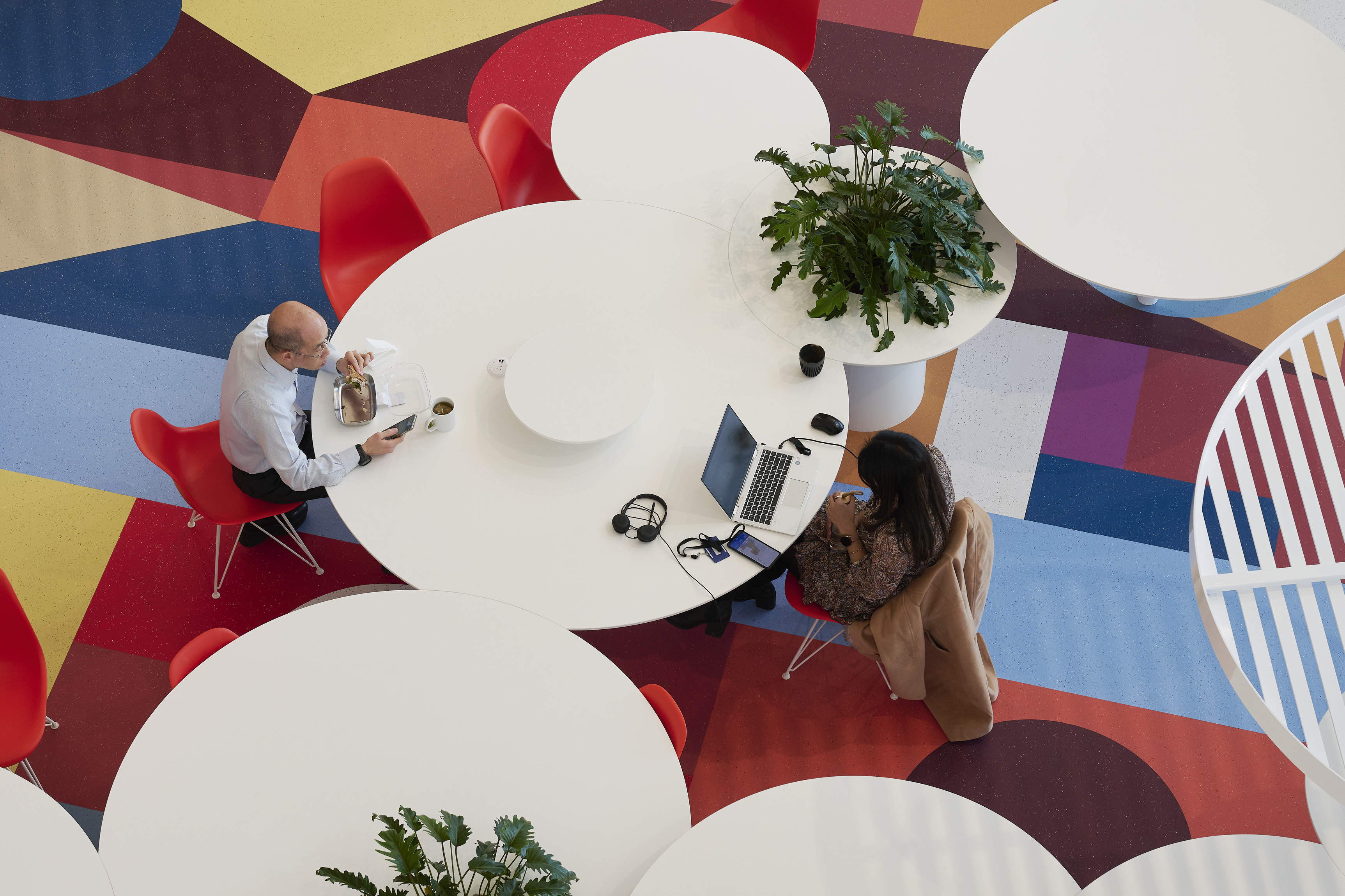Commonwealth Bank’s campus-style headquarters at Darling Quarter in Sydney serves as a forward-thinking, sustainable blueprint for the future of workplace design, where innovation and adaptability come together to shape inspiring spaces.
A visionary concept, Commonwealth Bank’s (CBA) award-winning campus-style workplace was the first of its kind, setting pioneering design precedents for the future. It was the company’s original activity-based working environment, but the time had come for the next lease of life and CBA’s vision was clear: to create a magnetic workplace that enables their people to innovate and deliver leading customer experiences and to attract and retain top talent. The revitalised interior of two existing eight-level buildings needed to be flexible and ready for a new chapter, seamlessly blending collaborative workspaces, dynamic social hubs, wellbeing zones, and access to gardens and fresh air.
Of utmost importance to CBA was the sustainability of the refurbishment. The retention and consolidation of as much existing material as possible to reduce the design’s embodied carbon formed part of their transformation strategy to give new life to the existing buildings without sacrificing design and functional outcome.
The brief from CBA was to reimagine the two low-rise buildings into a light, spacious, inviting and calm space, with lower embodied carbon. A seamless connection between the buildings drives unity and active collaboration, creating a sense of belonging. Reaffirming CBA’s heritage and role within the community through authentic connections, the result is a collaborative and fluid workplace that brings their people together and redefines human-centric design with adaptable spaces that are nurturing and engaging.
Taking learnings from the original office layout, a highly modular planning strategy was established to continue to future-proof CBA’s workplace for years to come. To support this, the design draws inspiration from urban planning principles, focusing on the concept of Haussmannian architecture that accentuates transparency, openness and symmetry. The approach involved enhancing the building’s curves to create open, navigable pathways, enabling employees to naturally journey to their next destination efficiently.
Hassell’s design team established an activated ‘main street’ to increase fluidity and sight lines and ease circulation while maximising public space, creating collaborative zones, and complementary private and quiet rooms in the ‘avenues’ to support different ways of working.
The central plaza concept of each building is unique to CBA. The base of each atrium presents an interactive hospitality experience with healthy food offerings, comfortable workspaces, function and client meeting spaces, and wellness facilities. The design encourages employees and guests to pass through these hospitality areas when entering the workplace, immersing them in the distinct CBA experience. Now, an urban village of activated social, work and community destinations has been established to foster more genuine connections for employees and visitors alike.
Home-like qualities, including access to gardens, green spaces and dedicated wellbeing zones, form part of CBA’s urban village. The entire perimeter is lined with planting designed to grow as the building ages, evoking a sense of calm and reprieve. Throughout the space, indirect soft lighting technology is utilised, providing warmth and comfort to sightlines. This simple yet innovative approach contrasts with traditional direct lighting specifications and has significantly transformed the workplace atmosphere. The overlay of domestic qualities integrated within joinery, scale and furniture brings a welcomed level of comfort and approachability. Overall, the material palette forms a natural backdrop to the hive of activity, creating a sense of calm, timelessness and tactility which blends seamlessly into the base building.






















